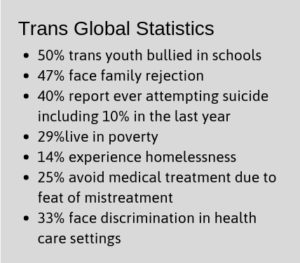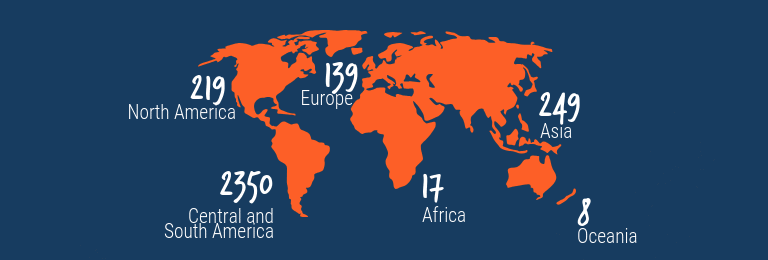Counting and Including Transgender Populations to Accelerate Progress to 90-90-90
August 12th, 2019 | viewpoint
We are 142 days away from our UNAIDS 90-90-90 target date (January 1, 2020). During the International AIDS Society (IAS) Conference in Mexico City on July 22, U.S. Ambassador Birx provided conference-goers with a 90-90-90 update, explaining that progress toward these goals is uneven globally, and that 54% of new infections are among key populations (KPs)—female sex workers, intravenous drug users, and men who have sex with men—and their partners, indicating that there are still significant coverage gaps.

Dr. Asa Radix, who is senior director of research and education at the Callen-Lorde Community Health Center, a clinical associate professor of Medicine at NYU, and associate editor of Transgender Health said at a plenary that although transgender people are a KP, they have been neglected in the HIV response. She explained that a commonality among trans people globally is that they all experience health care access challenges and trans women are 50% more likely to become infected with HIV than the general population. They are also subjected to transphobia, which results in widespread violence and neglect (Box 1), extending their vulnerability even further. Murders of trans and gender-diverse individuals have been on the rise in the past few years (Figure 1), with 2019 already on track to exceed previous years’ rates.
Not only do transgender people experience significantly higher rates of violence, but they also experience significant health-related vulnerabilities and reduced access to health care that is exacerbated by stigma and discrimination from providers and a lack of trans-friendly services.

Persecutory policies also impede access to care. At the global level, trans people are also significantly less likely to be included in HIV clinical trials including for treatments such as pre-exposure prophylactic from which they might benefit greatly. Nor have trans people been included in UNAIDS or other global statistics as a population with unique vulnerabilities, needs, and opportunities to reach them.
The increasingly audible call to include trans communities in the HIV global response has been at least partly heard, as IAS finally included the topic in a plenary. But another session on the perspectives of transgender individuals comprised five cisgender people and only one who was trans. It would seem obvious that transgender individuals are most familiar with their challenges and best-suited to suggesting solutions to those challenges, including designing models of trans-friendly services, differentiated service delivery models, and integrated models of care.
As we think about what it will take to reach epidemic control and what that means in terms of finding people who have not yet been reached or are hard to find, it is time to consider transgender people as a separate KP who should inform design and implementation of programs and services to reduce their considerable HIV-related vulnerability.
By Malia Duffy
We strive to build lasting relationships to produce better health outcomes for all.